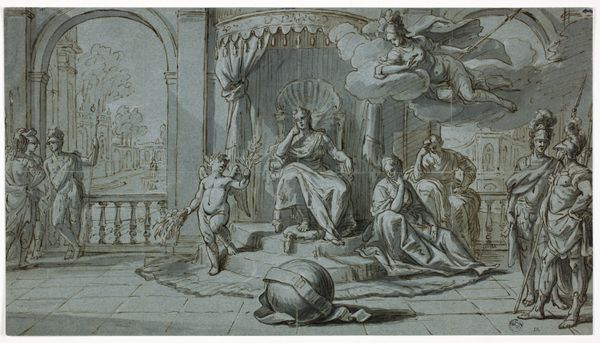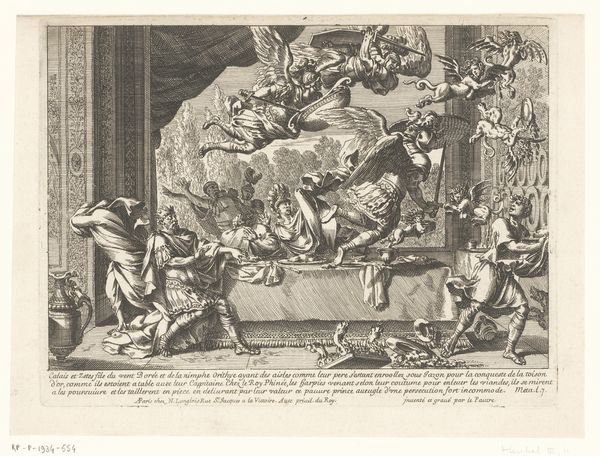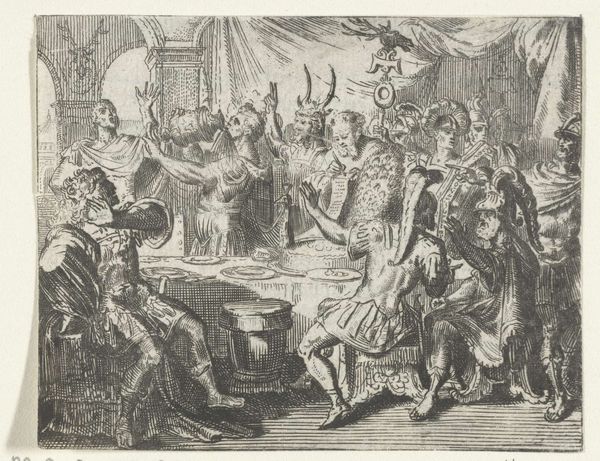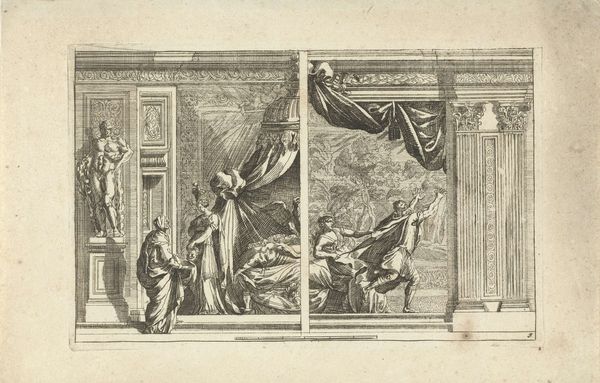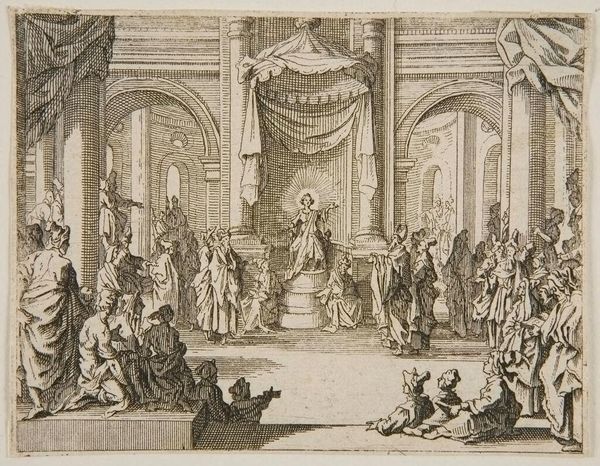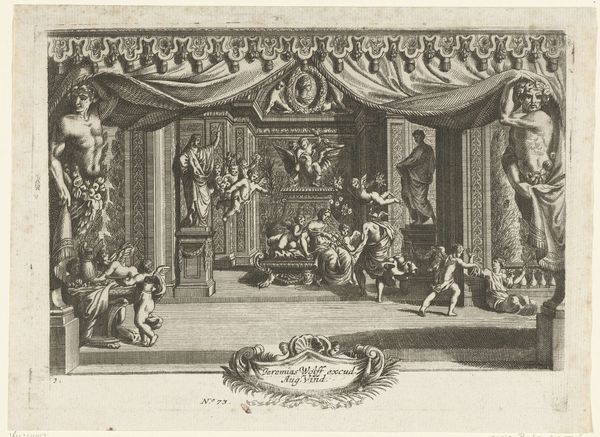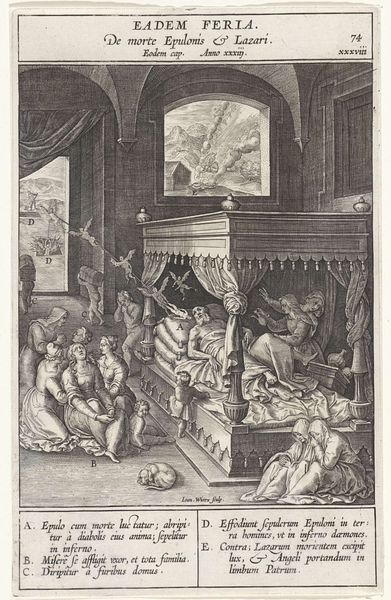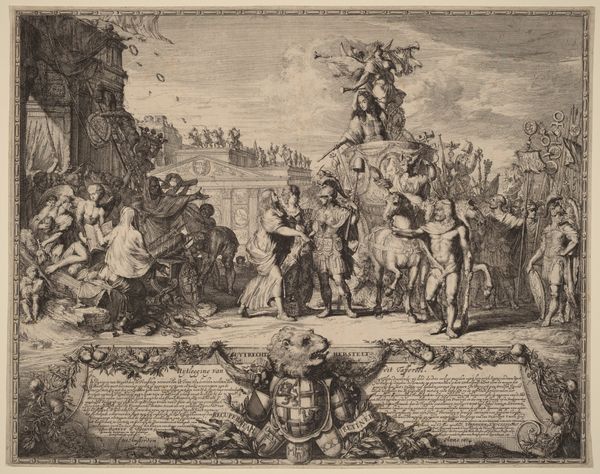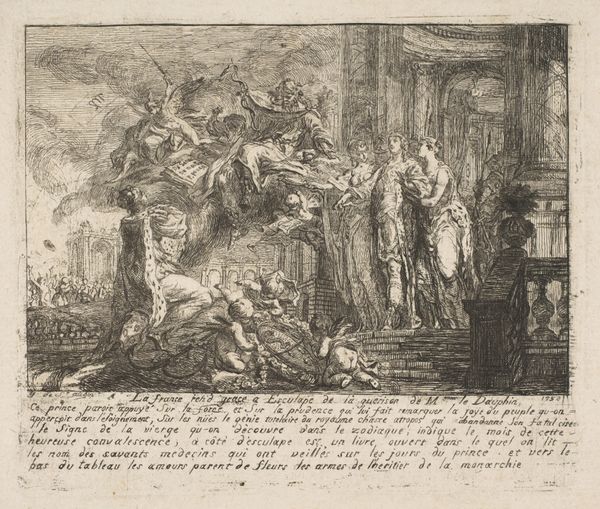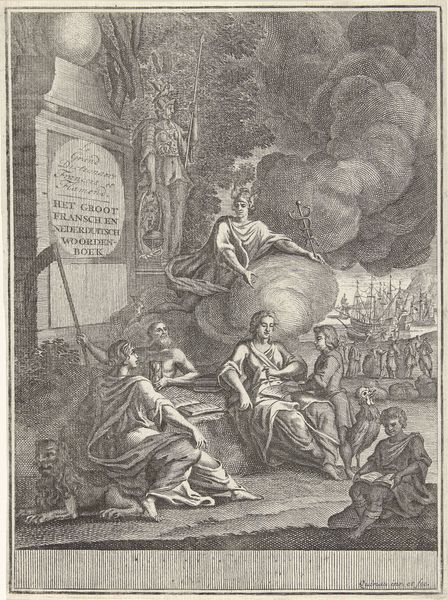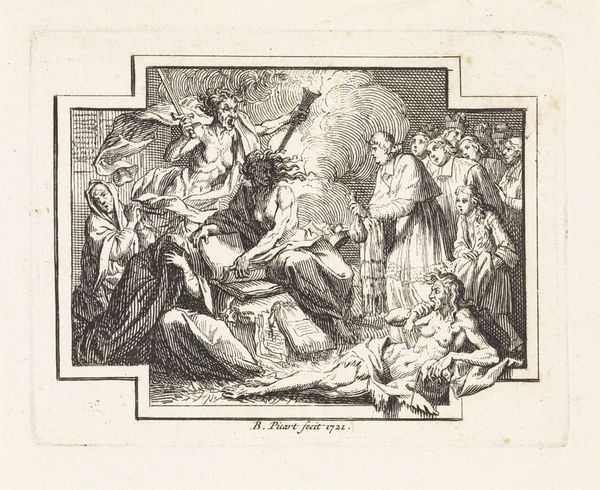
Book 5, Fable 14: the present and the future (Le present et l'avenir) 1719
0:00
0:00
drawing, print, engraving
#
drawing
#
allegory
#
baroque
# print
#
figuration
#
history-painting
#
engraving
Dimensions: Sheet (Trimmed): 3 1/8 × 3 13/16 in. (8 × 9.7 cm)
Copyright: Public Domain
Editor: Here we have Nicolas Henry Tardieu's "Book 5, Fable 14: The Present and the Future" from 1719, an engraving. It's quite dynamic, a real contrast between the flurry of activity on the left and the more static figures to the right. How do we unpack the meaning of such theatrical piece, situated as it is in the Metropolitan Museum of Art today? Curator: Indeed. What strikes me is how Tardieu is using the visual language of the Baroque to present a specific argument about power and history. This wasn't merely decoration; it’s participating in a visual dialogue with contemporary audiences, wouldn't you agree? Look at the contrast you noted, it highlights social dynamics through a codified language that celebrates royal authority. Editor: So, it's not just illustrative, but deliberately constructing a specific viewpoint. I’m seeing almost like…stagecraft? Is the theatrical framing emphasizing that we, as viewers, are also implicated in this representation of present and future? Curator: Exactly! And how is that framing influenced by where it was designed to be displayed, who the intended audience might be, and who controlled that narrative, and for what goals? Think about court life, patronage. The power was to manipulate and interpret fable for social endearment. Editor: I see, the positioning of this print in the world - then and now - actively shapes its message. So much more to engravings than I thought! Curator: Absolutely. It reminds us that art is never truly detached; its historical trajectory shapes how we interpret it in the present.
Comments
No comments
Be the first to comment and join the conversation on the ultimate creative platform.

